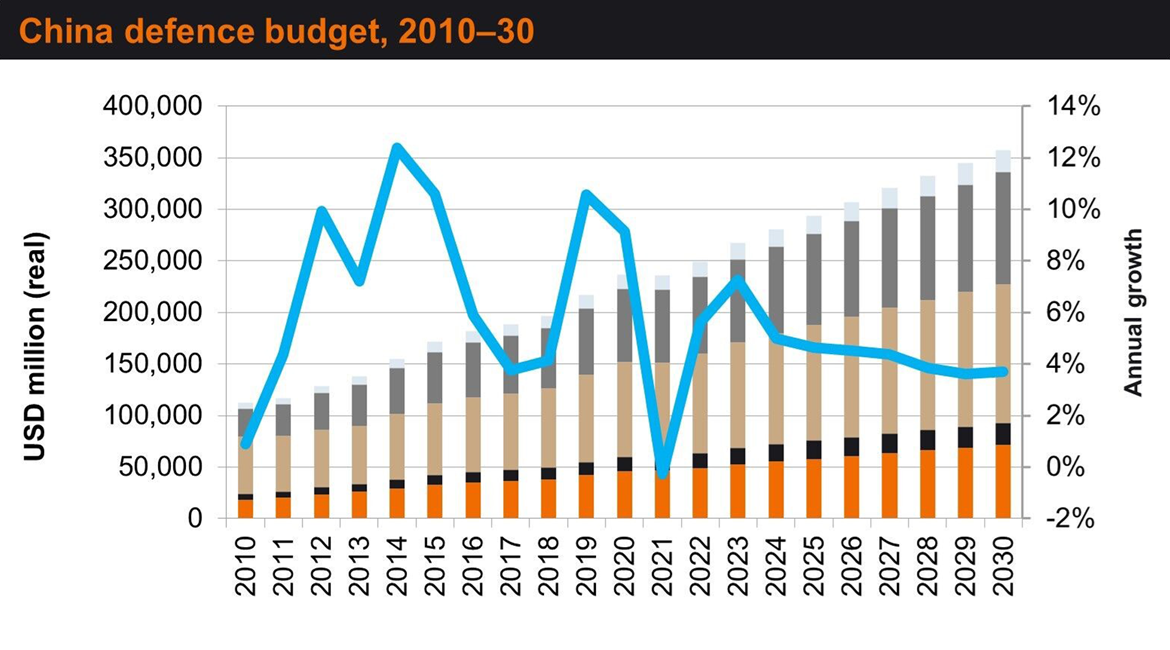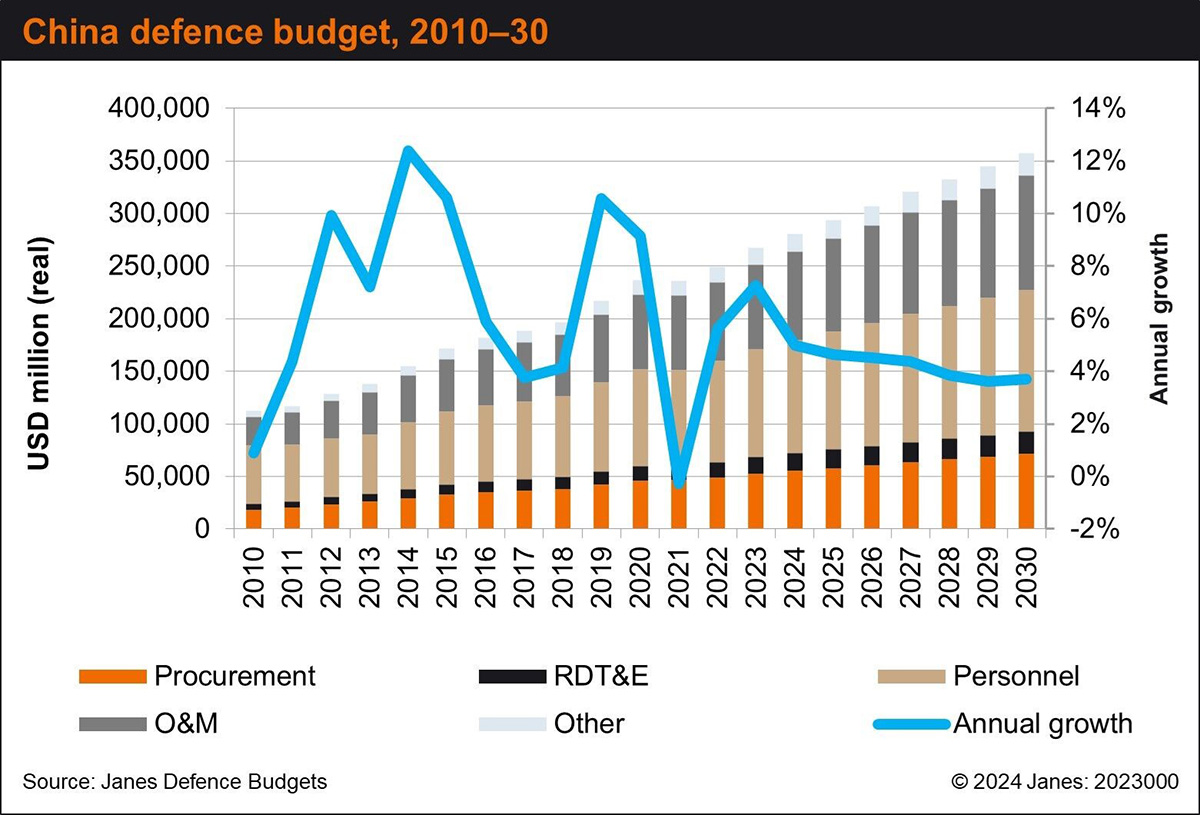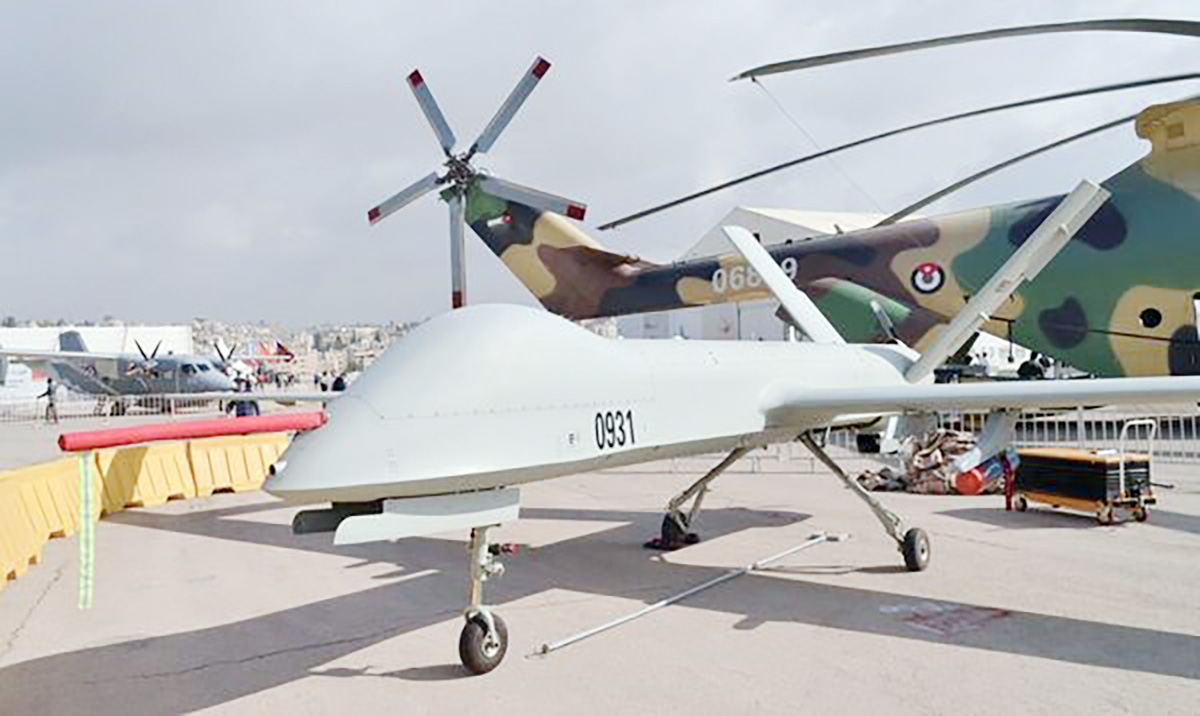
Date Posted: 23-Jul-2024
Author: Jon Grevatt, Bangkok
Key points
- The Communist Party of China has proposed a raft of new reforms for the PLA
- Measures are intended to accelerate military modernisation and eradicate corruption
The Communist Party of China (CPC) has called for a host of military reforms to support the continued development of the People's Liberation Army (PLA). The reforms were announced in a resolution issued by the CPC on 21 July as part of its wider plans to boost the country's economy and strengthen national security.
The CPC said the reforms will support the PLA's aim to achieve what Beijing terms as “military development” by 2027, the PLA's 100th anniversary. This goal is regarded by Beijing as a key milestone towards other modernisation targets in 2035 and the middle of the century. The reforms also form part of an accelerated drive by China's President Xi Jinping, who is general secretary of the CPC, to eradicate corruption within the PLA.
“We must maintain the [CPC's] absolute leadership over the PLA and fully implement the strategy of strengthening the military through reforms in order to provide a strong guarantee for realising the centenary goal of the PLA in 2027 and modernising national defence and the armed forces,” the CPC resolution said.

Janes Defence Budgets forecasts that China's total defence spending will reach the equivalent of nearly USD358 billion by 2030. (Janes Defence Budgets)
The reforms cover three areas of activities: military-civilian integration, PLA institutions for military leadership and management, and joint operations.
Reforms to deepen military-civilian integration are closely linked to Beijing's long-standing military-civil fusion (MCF) strategy, which aims to spur advances in military capability through modern and relevant civilian technologies.
The CPC resolution said reforms to China's vast defence research and development (R&D) and industrial institutions will be initiated to support military-civilian integration. The resolution indicated such reforms will be geared towards supporting PLA requirements.
“We will improve the mechanisms for submitting and reporting on defence-related military needs and enhancing military-civilian alignment,” the resolution said. “Reform[s] of the defence-related science, technology, and industry systems will be deepened to upgrade the layout of these areas.”
Reforms for military-civilian integration will also impact China's military procurement system and related R&D as well as seek to enhance wider involvement in defence from China's private sector. The reforms are also intended to improve co-ordination between air, sea, land, and other technology domains.
“We will refine the system for weaponry and equipment procurement, develop reward mechanisms for designing military products, and modernise our weaponry and equipment management system,” said the CPC resolution.
“We will improve the mechanisms for co-ordinating standards between the military and civilian sectors. We will better co-ordinate development and management in aerospace, military trade, and other fields.”
Reforms to enhance PLA leadership are intended to bolster professionalism and loyalty, the CPC resolution said. “We will refine the consultation and evaluation mechanisms for major decisions, develop new approaches to strategic management, and improve the military governance system,” it added. Reforms to military academies as well as PLA-affiliated enterprises will also be initiated, it said.
Reforms to enhance joint operations across PLA forces will be focused on command functions and establishing “new domain forces with new combat capabilities”, said the CPC. “We will optimise the composition of the command centres for joint theatre operations and improve the configuration of commands for joint task force operations. We will better co-ordinate the development and application of the network information system,” the resolution said.

China's military-civil fusion strategy is intended to support the development of military technologies, including UAVs such as the CH-4B (pictured), which is produced by the Aviation Industry Corporation of China (AVIC). (Janes/Patrick Allen)
The new reforms follow the introduction in July of revised regulations governing audits of the PLA. These regulations, which provide the Chinese government with the legal basis to conduct audits of the PLA's financial activities, were promulgated by the Central Military Commission (CMC), of which Xi is also chairman.
According to the government, the regulations cover the purchase and maintenance of weapons and logistics; the spending of R&D funds; the management, use, storage, and disposal of military equipment and materials; and the authenticity, legitimacy, and efficiency of military-run businesses.
Announcing the regulations, China's official Xinhua News Agency said they are intended to ensure high levels of military professionalism. “[The regulations] are of great significance to ensure high-quality development of national defence and military construction,” Xinhua reported.


